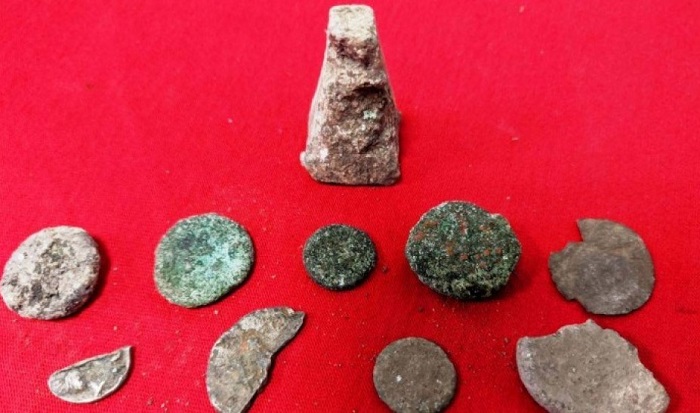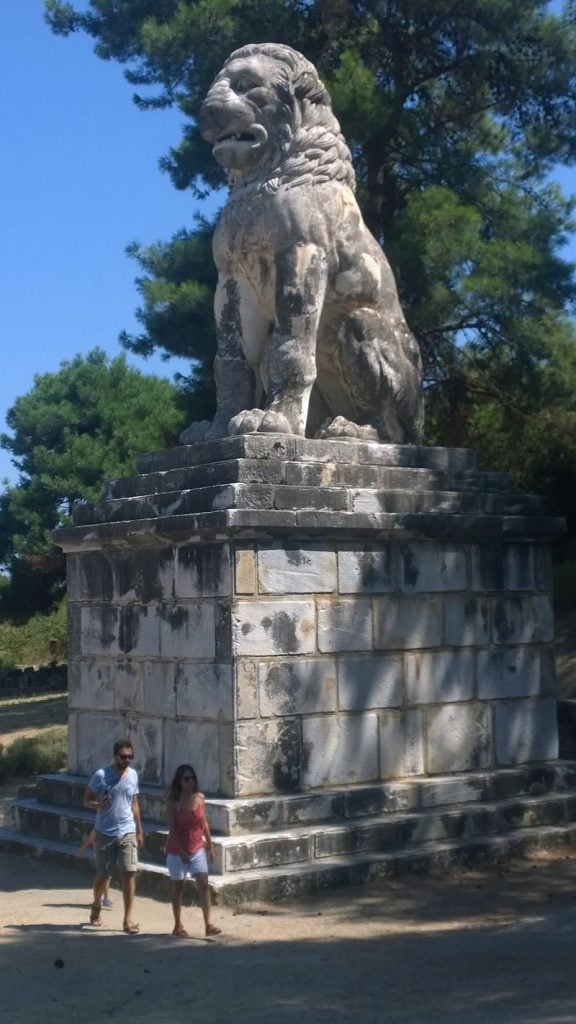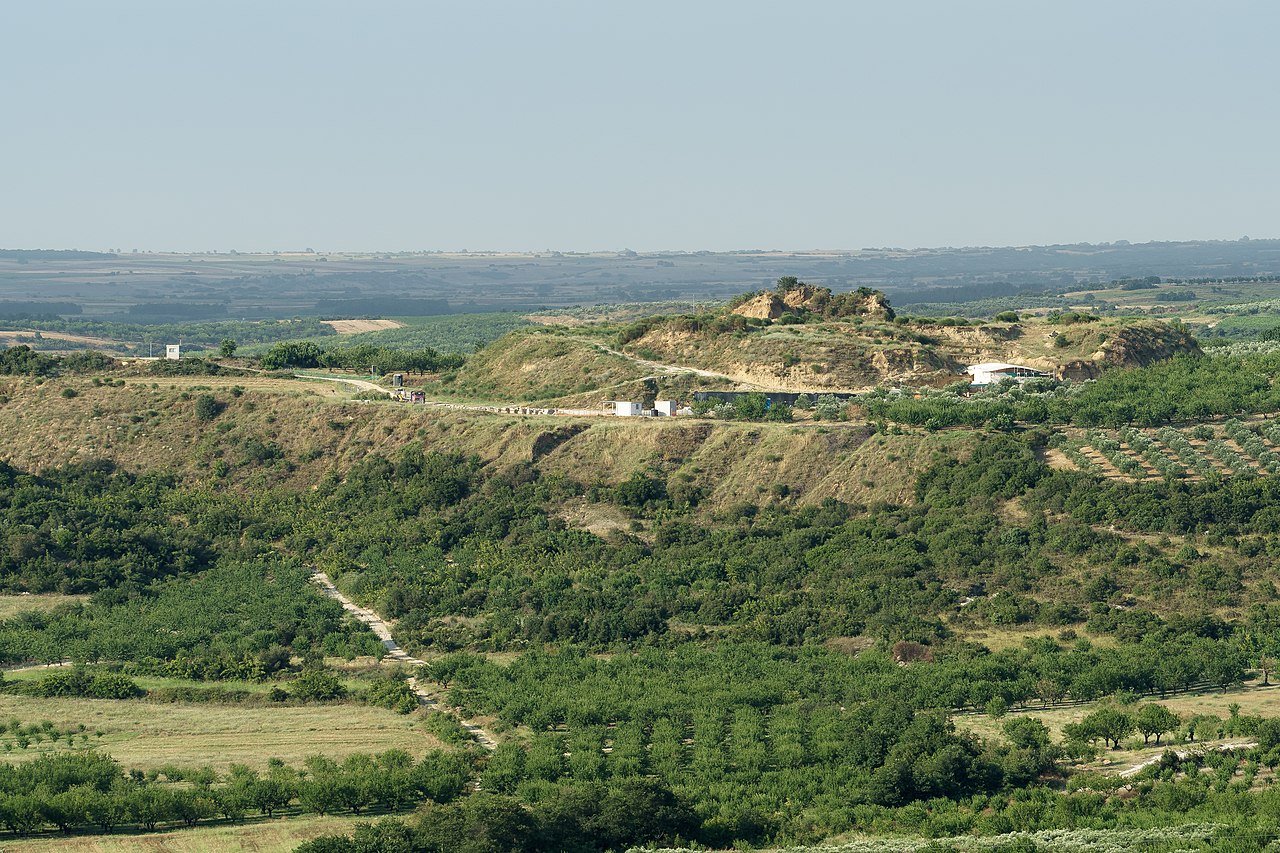
Found with a metal detector in his hand, a 68-year old man was arrested on Sunday for illegally excavating in the archaeological site of Amphipolis.
The area in Serres is known to hold a wealth of archaeological treasures and several objects were found on his person by the authorities. The man also had digging tools with him when he was caught red-handed by the Hellenic Police.
An investigation had been underway by officers belonging to the Department of Cultural Heritage and Antiquities in Thessaloniki.
After arresting the man, police searched his car and two houses — one in Thessaloniki and one in Serres — for objects which may have been stolen from the area.

Items were found that fall under the protective provisions of laws drawn up for the protection of antiquities and ancient culture in Greece.
An archaeologist from the Ephorate of Antiquities of Serres stated to the press that a bronze coin from Hellenistic times, a lead slingshot projectile with lettering, a lead pillar, eight lead spherical missiles, five other lead objects, two bronze objects, nine other bronze coins, and a lead pyramidal-shaped agnita were discovered in the searches.
Two metal detectors, digging tools and headphones believed to have been used in the unearthing of the objects were also collected at the sites searched by authorities.
The man has been charged with violating the laws regarding the protection of antiquities and cultural heritage. His case will be put before the public prosecutor’s office in Serres.
Amphipolis a strategic area since antiquity
The site, which contains the renowned Kasta Hill Tomb, was an ancient Greek city in Macedonia. Located on the Strymon (Strimón) River, it is about three miles away from the Aegean Sea.
From antiquity a strategic transportation center, Amphipolis controlled the bridge over the Strymon and the route from northern Greece to the Hellespont, including the western approach to the timber, gold, and silver of Mount Pangaeum in Thrace.
Originally a Thracian town called Ennea Hodoi, or “Nine Roads”), it was colonized by Athens in 437–436 BC but it actually remained independent, despite Athenian attempts to regain control in 416 and 368–365.
Philip II of Macedonia occupied Amphipolis in 357 BC, and it remained under Macedonian control until 168, when Rome made it a free city and the headquarters of the Roman governor of Macedonia.

Sphinxes, priceless mosaics discovered at the site
Archaeologists have made a number of important discoveries on the site since excavations began there in earnest in August 2014. Experts say that the Tomb bears the handprint of Dinocrates of Rhodes, the chief architect of Alexander the Great.
Some of the findings made there have already been moved to the Archaeological Museum of Amphipolis.
So far, archaeologists have found the following treasures:
Two marble sphinxes approximately 2 meters (7 feet) tall, guarding the main entrance to the tomb and a fresco, with paint still visible, that mimics an Ionian peristyle, on top of which the sphinxes sit.
Two 2.27 meter (7.4 foot) high female statues in the Caryatid style were found in the antechamber, which support the entrance to the second compartment of the tomb.
A mosaic measuring 3 meters (9.8 feet) wide and 4.5 meters (15 feet) long was found in the second chamber, which appears to depict Persephone being abducted by the god Pluto (Greek: Πλούτων, Ploutōn).
The ruler of the underworld is depicted wearing a laurel wreath and driving a chariot drawn by horses led by the god Hermes, the conductor of souls to the afterlife. The depiction of the abduction of Persephone in the mosaic floor implies links with the cluster of royal tombs in Vergina (Aigai), as a mural representing the same scene decorates one of the tombs where King Philip II, Alexander the Great’s father, is buried.
The skeletal remains of five individuals were also found in the tomb, including a woman over 60 years of age; two adult men, between 35 and 45 years of age; a newborn infant; and fragments of a cremated adult.
Analysis of the intriguing skeletal remains is still ongoing.
Lion sculpture created in 4th century BC
Traces of ancient fortifications and a Roman aqueduct are on the site, which is just outside the modern town of Amfípolis.
The renowned giant statue known as the Lion of Amphipolis (Greek: Λέων της Αμφίπολης) is a 4th-century BC tomb sculpture. According to Oscar Broneer and archaeologist Dimitris Lazaridis, the first person excavating in the area in the 1960s, it was created in honor of Laomedon of Mytilene, who was an important general under Alexander the Great, the king of Macedon.
The discovery of the monument has extraordinary meaning for the Greek people since it is also is connected to the modern history of Macedonia. The first sections of the Lion were discovered initially by Greek soldiers who had camped in the area during 1912-13 during the First Balkan War.
British soldiers in the area a few years later in 1916 then discovered other large pieces of the monument. The British tried to steal the pieces, but a Bulgarian attack fortunately prevented those plans from bearing fruit.
Yet more sections of the Lion were discovered in the early 1930s, during works for draining part of nearby Lake Kerkini. After uncovering the remains of an ancient bridge, large pieces of the marble lion were also found in the mud of the lake.
Monumental lion towers 26 feet into the sky
In 1937, thanks to Lincoln MacVeagh, the US ambassador to Greece, there was a private initiative, along with support and funds from the Greek government, to restore the Lion.
Although in a seated position, the lion is larger and bulkier than the one erected at Chaeronea and has a height of more than 4 meters (13 feet). With its monumental base, the Lion towers more than 8 meters (26 feet) into the sky.
According to experts, its craftsmanship shows that it was sculpted in the 5th or first half of the 4th century B.C. Unfortunately, there is no mention of the Lion in ancient sources.
Some have speculated that the lion was once on top of the Kasta Tomb, but this theory has now been discounted.
The Kasta Tomb is still undergoing excavation work by a team of archaeologists. Asked when the monument could open for the general public in December of 2019, Greek Culture Minister Lina Mendoni said that there is much that needs to be done and pointed out that it had taken 20 years for the tomb of Philip in Vergina to open to the public.
“That will happen too”
However, she added, modern means can make it possible that the same type of work can be carried out in less time at the Amphipolis site.
“I live for the day the Lion of Amphipolis will be transferred to the Kasta tomb,” the regional governor told Mendoni at the time she visited the site in 2019.
“That will happen too,” she answered.
Architect Michalis Lefantzis, who guided the minister and the regional governor around the site, noted that 330 large slabs of marble that were structural elements of the enclosure around Kasta Hill Tomb had been transferred back there from the site of the Lion of Amphipolis, where they had been stacked in order to facilitate the Tomb’s excavation.
The slabs have now been placed next to each other like pieces in a jigsaw puzzle, waiting for their precise position in the original structure of the enclosure to be determined.



Comments
Post a Comment